
The one thing I idolize about Julian Fellows, Mr. Downtown Abby, and creator of the new series The Gilded Age, is his attention to historical detail, particularly historic food detail. The Gilded Age, although no Downton Abby is as rigid to historical adherence as one can hope. And Fellows didn’t disappoint, even in the opening episode where we meet all the characters. When the social climbing Bertha Russell throws an ‘at home’ at her and husband, tycoon, George Russell’s newly constructed Fifth Avenue mansion, she has an opulent gnosh spread in the dining room. On that table, amidst towers of macarons and elaborate meat pies, is not just one but two elaborate platters of a dish called Salmon a la Chambord.

The reason I recognized the dish was that I zoomed a presentation in December by the New York Adventure club called “A Dickens Christmas Feast: Food in 1800s Britain.” The presenter was Carl Raymond, culinary historian, who runs the podcast The Gilded Gentlemen, and he pointed out this dish and its inventor. And by the way, the New York Adventure club is taking advantage of Fellows’ popularity and the newness of the new series Gilded Age with some phenomenal lectures on the New York Gilded Age mansions that make appearances in the series.
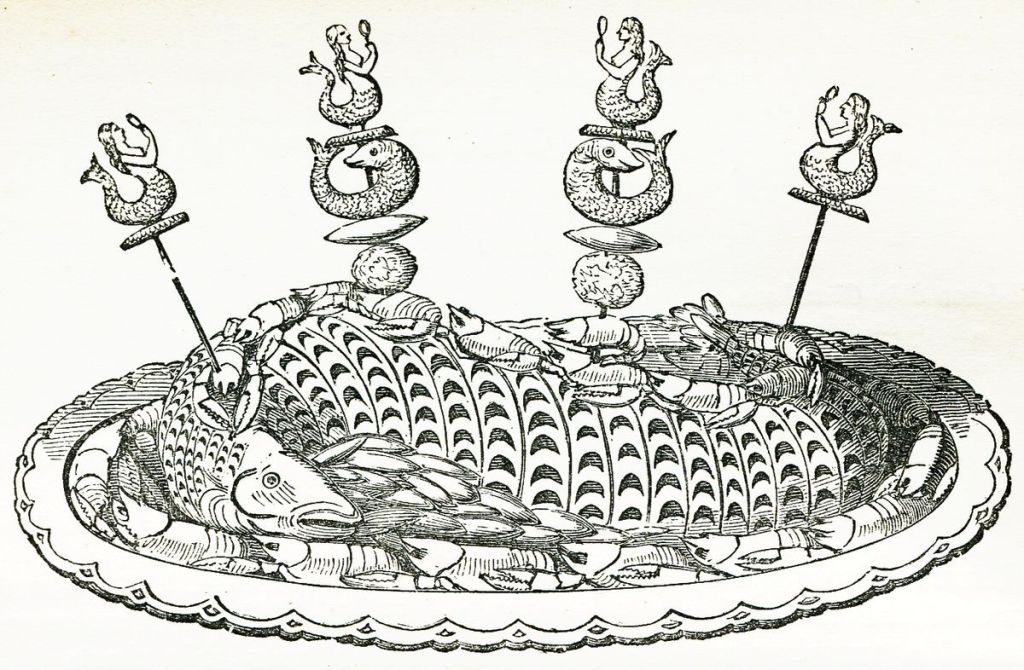

Salmon a la Chambord is probably one of the most elaborate and fussy dishes of Victorian French cuisine. Clearly it’s used to show off Russell’s imported French chef, Monsieur Baudin, who is the height of chic in 1880s New York City. The dish requires a whole poached salmon, skinned with head and tail attached, speared by at least four whole crawfish and decorated with at least eight filet of soles checkered with black truffles garnished with even more whole crawfish, mackerel roe, alternating with quenelles of whiting fish salad colored with crushed lobster coral, all doused in Espangole sauce and anchovy butter.
Mrs. Russell chooses two humongous salmon, both about three feet long. And Fellows attention to detail in the dish is impeccably correct. Both of them flank the long table of decadent delights and almost become their own characters in the scenes. What’s even more opulent is the fact that there are very specific decorated spears used to spear the crawfish on top of the salmon. The fact that a household would have these Salmon a la Chambord spears in their pantry alone is a sign that they are an entertaining force to reckoned with. I am now on the hunt to find a set, although I think they may only exist in museums or historic mansions like the Vanderbilt in Asheville, North Carolina. They’re kind of like those antiquated serving pieces like oyster spoons that some Bridezillas still put on their gift list that they will NEVER use.
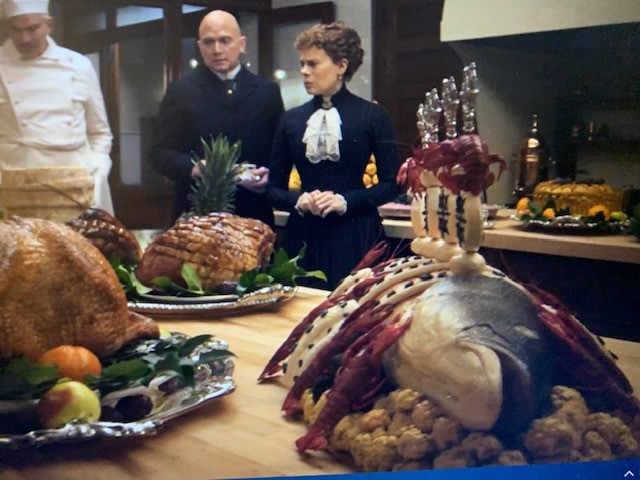
As below stairs staff prepare for the party, Monsieur Baudin, complains he needs to know how many guest there will be, “She (Mrs. Russell) said two hundred, but I must be ready at a moment’s notice if we go over that figure. I’m not making ham sandwiches! “. And after no one shows to the party because the Russells are nouvelle riche and not part of the old society of New York families, Mrs. Russell instructs the staff dressed in elegant red French livery to take it away. They will call the charities to pick it up tomorrow. When it’s all brought downstairs to be packed up for charity, Chef says, “I’m not used to cooking for paupers!”
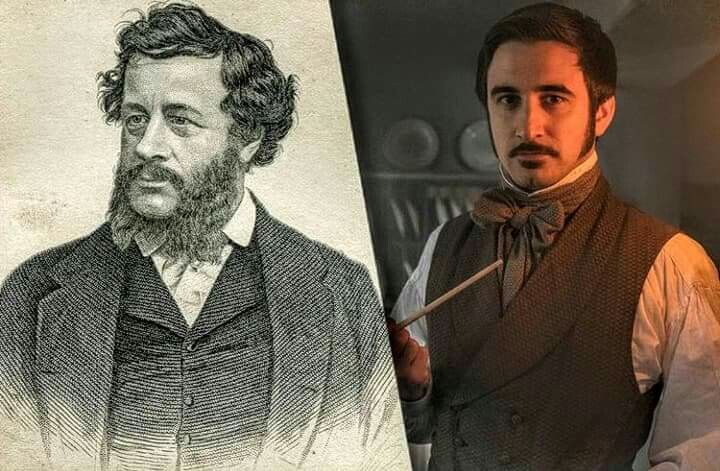
The dish was created in the 1840s by Charles Elme Francatelli (1805-1876) and appeared in his 1846 cookbook, The Modern Cook: A Practical Guide to the Culinary Art and All Its Branches, published in London. Francatelli was an Italian-English chef. He studied in Paris under Marie-Antoine Careme, who practiced the elaborate style of cuisine known as grande cuisine, the high art of French cooking, an over-the-top style of cooking popular with nobility and the nouvelle rich of Paris. After training he acquired the position of chief chef at the St. James Club in London. His reputation there afforded him the chance to leave and become chef to Queen Victoria from 1840 to 1842. He was also chef for the Prince and the Princess of Wales at the Marlboro House, in addition to other famed London clubs and high end restaurants.
Chef Francatelli was played by actor Ferdinand Kingsley in the television series Victoria, but in real life did not marry Queen Victoria’s head dresser as he did in the series.
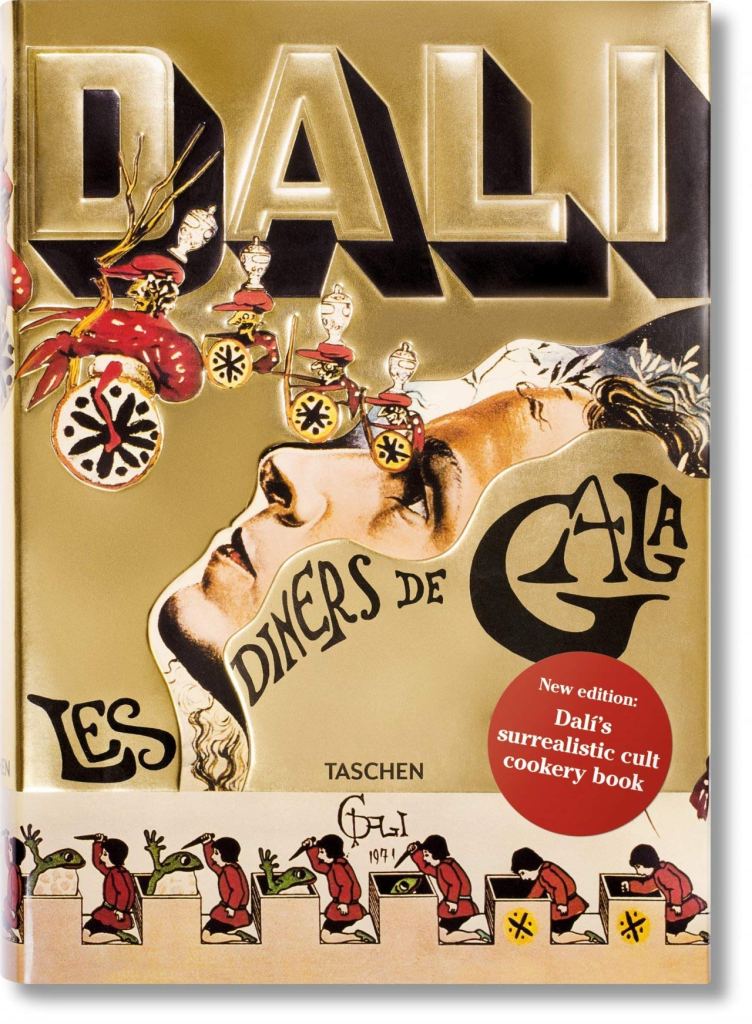


Salmon a la Chambord appeared again in fashion in artist and surrealist circles, as it was the inspiration for Salvador Dali’s Cookbook Les Diners de Gala. The speared crawfish of the dish make the wild cover of Dali’s cookbook.
Published only once in 1973, Les Dinners de Gala was a dream fulfilled for surrealist artist Salvador Dali who claimed at the age of 6 that he wanted to be a chef. The bizarro cookbook pairs 136 recipes over 12 chapters with his exceptionally strange illustrations (two of Salmon a la Chambord) and collages created especially for the publication. The artworks depict towering mountains of crayfish with unsettling overtones of cannibalism, an unusual meeting of a swan and a toothbrush in a pastry case, and portraits of Dali himself mingling with chefs against decadent place settings. Recipes include such delicacies as “Thousand Year Old Eggs”, “Veal Cutlets Stuffed With Snails”, “Frog Pasties”, and “Toffee with Pine Cones”.
Dali is widely known for his opulent dinner parties thrown with his wife Gala, events that were almost more theatrical than gustatory. The celebrity guests, were required to wear completely outlandish costumes and an petting zoo of wild animals often roamed free around the dinner table. Despite the unusual ingredients and preparation methods, many of the old school recipes in Les Diners de Gala originated in some of the top restaurants in Paris at the time including Lasserre, La Tour d’Argent, Maxim’s, and Le Train Bleu, at the Gare de Lyon train station.


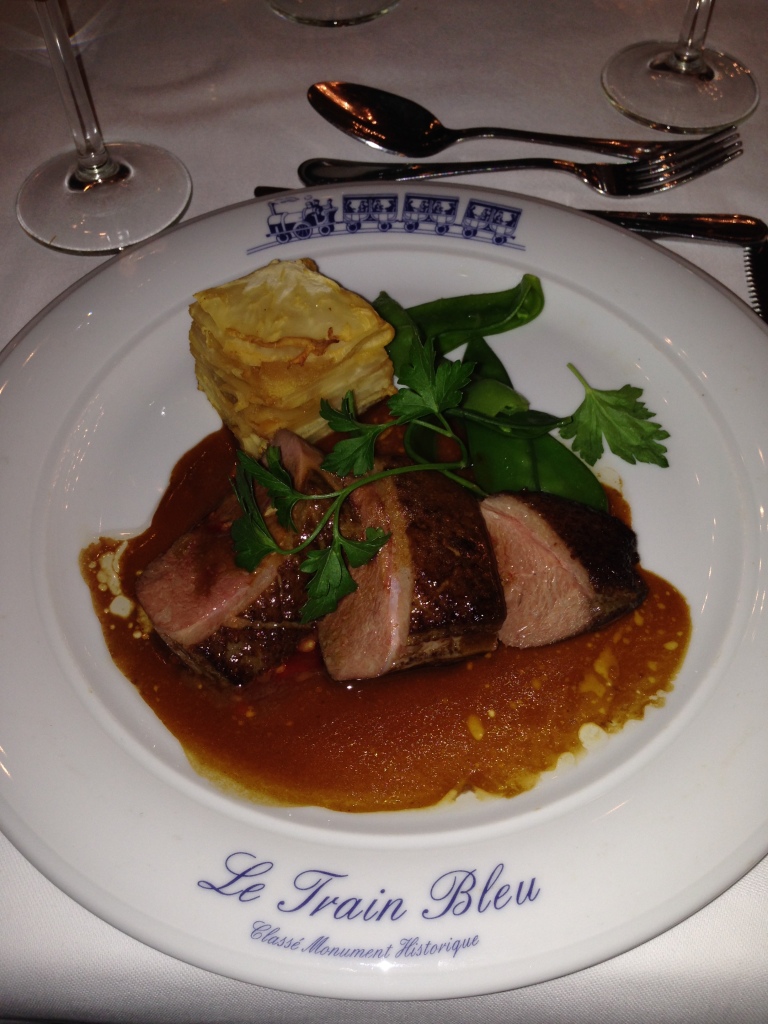

I had the golden opportunity a few years ago to have dinner at the fabulously beautiful Le Train Bleu in Paris for a work event, where Salmon a la Chambord had been served many times. Although we were not served this opulent dish, the multi-course plating and artistic gastronomy gives one a small impression of how an opulent Gilded Age dinner must have felt.
I’m going to watch the show just to see the salmon. That fish is a work of art!
LikeLike